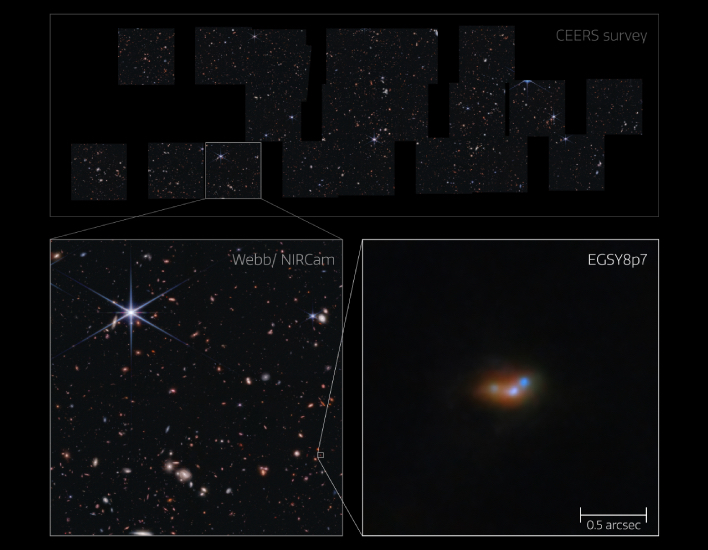Forget What We Know About The Early Universe, Webb Just Made A Stunning Discovery

According to a report by the European Space Agency (ESA), researchers analyzing Webb data collected as part of its Cosmic Evolution Early Science (CEERS) Survey, were able to essentially double-check results where the telescopes’ observations overlap. Through this analysis, the team was able to confirm that it was “very consistent” with galaxies in the Hubble Space Telescope’s catalogue. What they found were a multitude of odd shapes when the Universe was around 600 million to 6 billion years old, with the approximately 50 to 80% appearing flat and elongated, like pool noodles or surfboards.
“Hubble has long showed an excess of elongated galaxies,” remarked co-author of a new study, Marc Huertas-Company. “Webb confirmed that Hubble didn’t miss any additional features in the galaxies they both observed. Plus, Webb showed us many more distant galaxies with similar shapes, all in great detail.”
Elizabeth McGrath, another co-author of the study, remarked that these are still early results. She added that the team needed to dive deeper into the data in order to try and figure out what was going on, but that they were extremely excited about the early trends they were finding.
While the data was exciting, it also leaves one question about the different shapes of the early Universe unanswered: Why do galaxies have such different shapes in the early history of the known Universe? The ESA says that research is underway to try and “better understand how galaxies evolved over all cosmic time.”
Webb’s ability to capture the early Universe in such detail has also provided other researchers with what they believe to be the answer to a mystery of the very early Universe. The mystery involves why astronomers detect light from hydrogen atoms that should have been blocked entirely by the “pristine gas” that formed the Big Bang.

“Where Hubble was seeing only a large galaxy, Webb sees a cluster of smaller interacting galaxies, and this revelation has had a huge impact on our understanding of the unexpected hydrogen emission from some of the first galaxies,” remarked Sergio Martin-Alvarez, a team member of the group performing the study.
As Webb continues to push the envelope of what is known, and unknown, about the known Universe, more findings that will both challenge and confirm older theories will certainly emerge. One can only wonder what might be found with the next generation of space telescopes.

